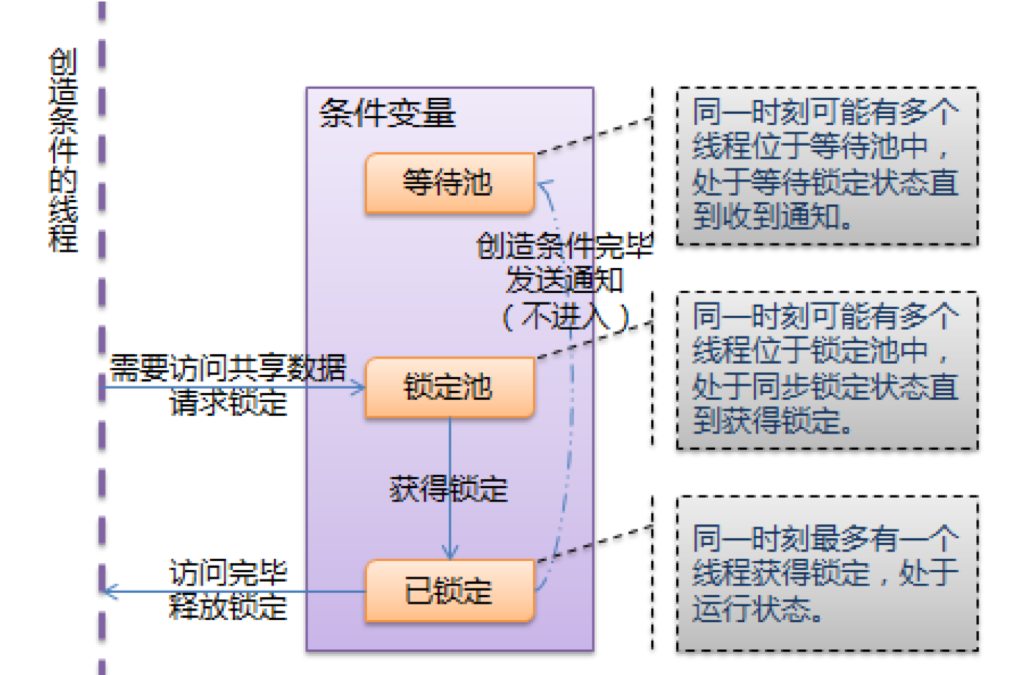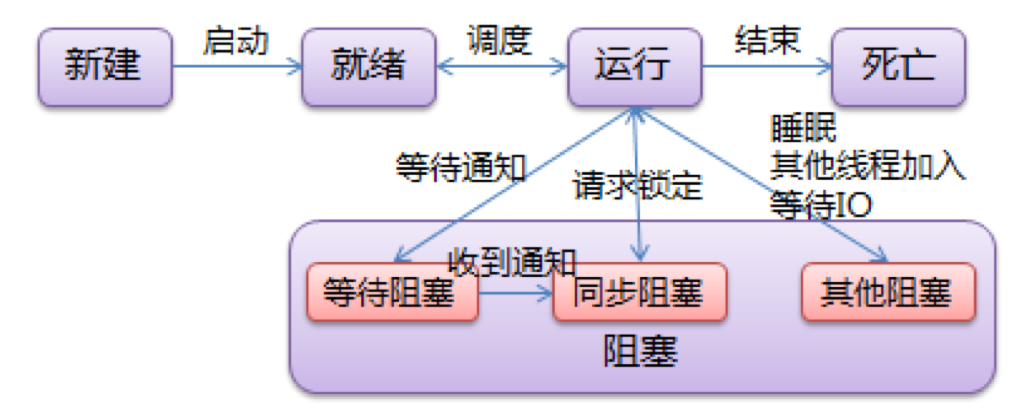Multiprocessing-and-Multithreading
 Multiprocessing-and-Multithreading copied to clipboard
Multiprocessing-and-Multithreading copied to clipboard
Notes for multi-processing and multi-threading
This repo contains multi-threading related stuff in Java and Python, and multi-processing related stuff in Python.
Multi-threading
Thread Safety
Thread-safe code must ensure that when multiple threads are accessing a shared object, no matter how these threads are scheduled or in what order they are executing, this object will always behave correctly without any external synchronization, and every thread will be able to see any changes happened on this object immediately.
Race Condition
A program attempts to do some parallel operations at the same time, but requires that the operations are done in a specific order that is not guaranteed.
(They are difficult to detect because oftentimes, the ordering may be correct, making the system appear functional.)
Whenever there is read from/write to shared global variables, there could be race condition.
=> Check out Multi-processsing and Multi-threading in Python Examples/Multi-threading/race_condition_demo/race_condition.py
Away with Race Conditions: (-> Thread-Safe)
-
Ensure an explicit ordering of the operations (on the shared resources)
All operations (on the shared resources) must be executed in the same order they are received.
=> To ensure this, we simply put the operations (on one shared resource) in a single thread.
-
Restrict access to the shared resource
Only one operation can access the shared resource at the same time. During the period of access, no other operations can read or change its value.
1. Solution with Immutable Objects
Check out this design pattern: Immutable Object Pattern for more details
Since a class must have a lot of restrictions to be immutable, this solution is not very feasible in many practical cases.
2. Solution with Atomic Operations & Classes ***
Atomic operations are performed in a single unit of task, without interference from other operations.
e.g., Java AtomicInteger, Random, ConcurrentHashMap, ConcurrentHashSet, and the following (atomic) blocking queue interface and implementations
Solution with (Atomic) Message Queue ***
- (对应于上面的1) Each shared resource shall be accessed in exactly its own thread.
- (对应于上面的2) All communications with that thread shall be done using an atomic message queue
- Java:
BlockingQueueinterface, withArrayBlockingQueue,LinkedBlockingQueueandPriorityBlockingQueueimpelementations - Python:
queue.Queueandqueue.PriorityQueueclasses
- Java:
3. Solution with Locks ***
Note that many solutions above, like Atomic Operations & Classes and (Atomic) Message Queue, have built-in locks in their implementations, so using locks explicitly is considered a low-level synchronization operation and should be avoided
Thread的wait和notify


Thread状态转换总结

Distributed Locking Mechanism (Using Redis)
For a distributed scenario, we can use the Redis's single-threaded feature to
-
Implement a naive distributed lock
Simple but imperfect
=> In NOT so high-concurrent scenarios, this works just fine.
-
Use a third-party library
Complex but perfect
=> Works for high-concurrent scenarios
Check out
distributed_locking.py
Comparison between Multi-threading, Multi-processing, and Asynchronous IO in Python
After studying asynchronous IO in Python, we are able to compare these three concurrent strategies:
| Multi-processing | Multi-threading | Asynchronous IO | |
|---|---|---|---|
| Use blocking standard library functions | YES | YES | NO |
| Optimize waiting periods | YES Preemptive, because the OS handles subprocess scheduling |
YES Preemptive, because the OS handles thread scheduling |
YES Cooperative, because the Python interpreter itself handles coroutine scheduling |
| Use all CPU cores | YES => 可以把thread/coroutine包在subprocess之中, 达到充分利用多核CPU的目的 |
NO | NO |
| GIL interference | NO | Some (对于IO密集型程序, 由于CPU可以在thread等待期间执行其他thread, NO) (对于CPU计算密集型程序, YES) |
NO |
| Scalability (本质上, 与开销有关) |
Low | Medium | High => 对于真正需要巨大scalability时, 才考虑使用async, 比如server需要处理大量requests时 |
License
This repo is distributed under the MIT license.